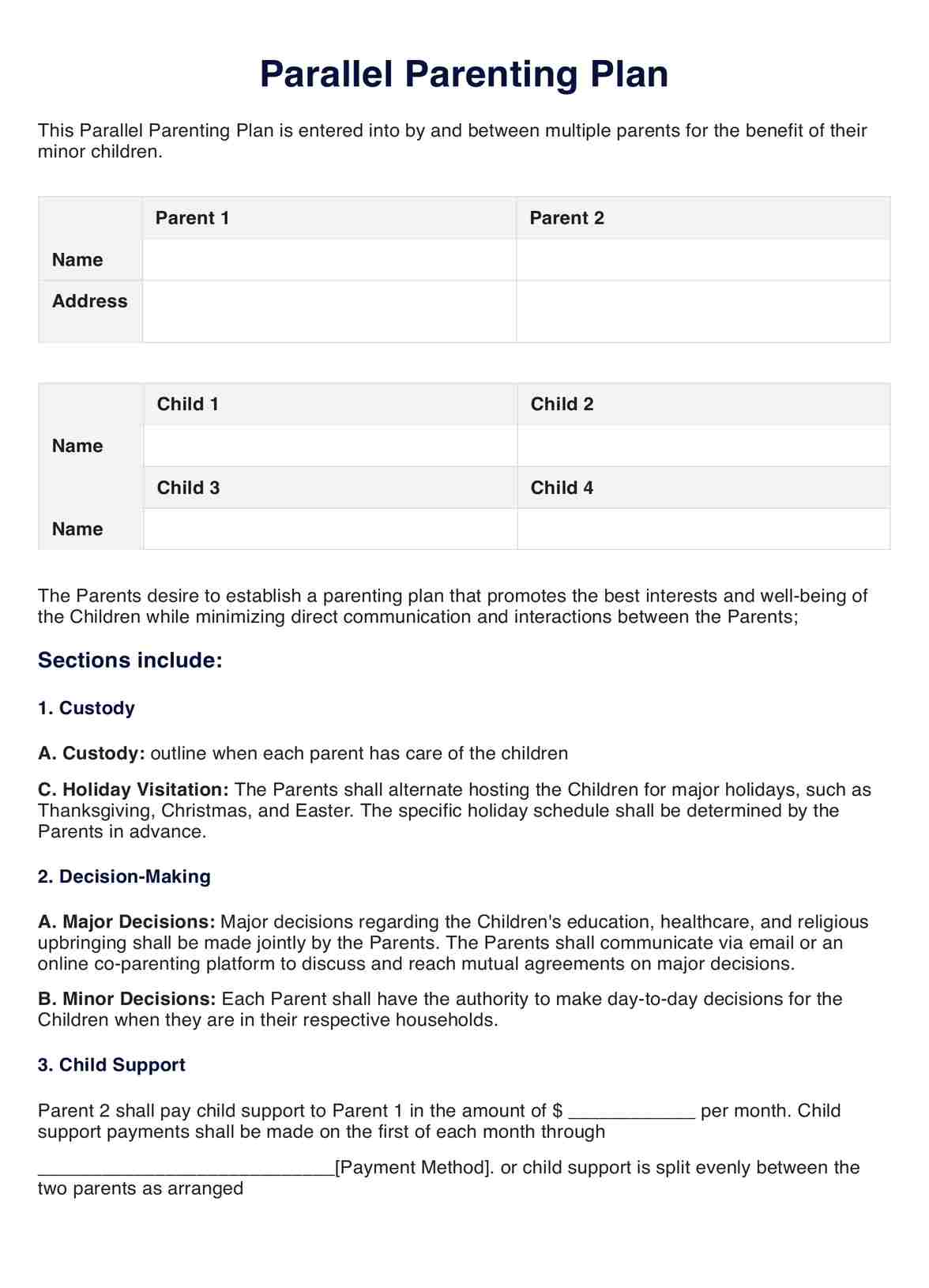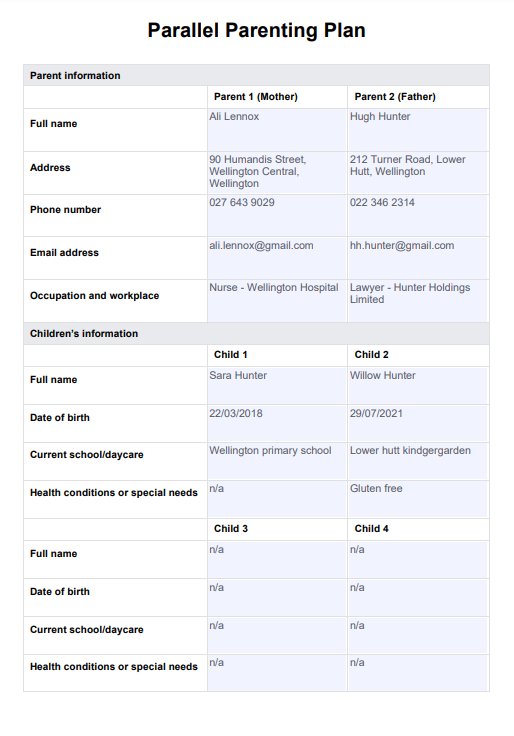
A parallel parenting plan template is a structured framework for divorced or separated parents who prefer to minimize direct communication and interactions and instead manage child-related matters through separate channels.

By Liliana Braun on Jul 21, 2024.
Fact Checked by RJ Gumban.


A parallel parenting plan template is a structured framework for divorced or separated parents who prefer to minimize direct communication and interactions and instead manage child-related matters through separate channels. This approach aims to reduce conflict and promote independent decision-making for each parent, enabling them to maintain their household routines and parenting philosophies.
Key features of a parallel parenting plan template include:
A parallel parenting plan template can be a good option for parents who:


Steps involved in filling out a printable parallel parenting plan template
By following these steps, you can effectively utilize a parallel parenting plan template to create a structured agreement that addresses all aspects of child care and decision-making, promoting a stable and supportive environment for your children despite your separation.
A parallel parenting plan template is an appropriate option for divorced or separated parents who:
Utilize this parenting plan template to support and enhance your practice and client success.
Using a free parallel parenting plan template can lead to numerous positive outcomes for divorcing or separating parents seeking a structured framework for child care and decision-making. This template serves as a comprehensive guide, clearly outlining responsibilities in areas such as education, healthcare, and financial support. By providing this organized structure, the plan contributes to a stable and supportive environment, promoting the emotional, social, and developmental well-being of the children involved.
One significant advantage of a parallel parenting plan is its ability to reduce conflict and encourage cooperation between high-conflict parents. By delineating responsibilities independently, the plan minimizes direct communication, mitigating the potential for disputes. Furthermore, this autonomy empowers parents to make independent decisions aligned with their unique parenting styles while ensuring the needs of their children are met.
Crucially, a parallel parenting plan safeguards both parents' legal rights and prioritizes the children's best interests. By establishing clear expectations, the plan fosters transparency and accountability, nurturing a sense of trust between parents. It also outlines conflict resolution procedures, such as mediation or arbitration, to address disputes amicably and maintain a positive co-parenting relationship.
As children grow and their needs evolve, the plan serves as a flexible foundation for adjustments or modifications to parenting arrangements. This adaptability ensures the continued relevance and effectiveness of the plan throughout the children's lives.
Additionally, the template provides parents with resources and guidance, empowering them to make informed decisions that align with the best interests of their children. Overall, a parallel parenting plan offers a holistic approach to co-parenting, emphasizing positive outcomes and cooperative parenting for the benefit of the entire family.
A study by Kara & Sümer delves into the significance of parallel parenting plans in the context of fathers' parenting behaviors and co-parenting quality, shedding light on their impact on children's academic self-efficacy. With a focus on both universal and culture-specific parenting practices, the research reveals that positively consistent parents, especially those utilizing parallel parenting plans, correlate with the highest levels of academic self-efficacy in children. The findings underscore the role of positive parenting and co-parenting consistency, providing insights into the unique benefits of employing parallel parenting plans for fostering children's academic success (Kara & Sümer, 2022).
Further research gives valuable insights into the dynamics of high-conflict post-divorce co-parenting, emphasizing the multidimensional nature of the process. The findings highlight four key axes related to high-conflict co-parenting, including a long-term commitment to parenting, prioritizing the child's best interests, navigating disagreements, and facilitating emotional healing post-separation, which can be aided and monitored through parallel parenting plans. Recognizing co-parenting disagreements as part of a larger dynamic process, the study suggests interventions should consider these dimensions and their reciprocal interactions. The study provides a new understanding that aligns with the principles of parallel parenting plans, offering a comprehensive approach to managing high-conflict post-divorce co-parenting (Stolnicu et al., 2022).